Development of Deep Learning Based Human-Centered Threat Assessment for Application to Automated Driving Vehicle
Abstract
Featured Application
Abstract
1. Introduction
2. Human-Centered Threat Assessment
2.1. Driving Characteristics of Human Drivers
2.2. Risk Management
3. Design of Deep Neural Network for Learning Human Driver
3.1. Deep Neural Network Based on Neural Architecture Search
3.2. Recurrent Neural Network (RNN) Using Sequential Data
3.3. Learning Driving Data of Adaptive Cruise Control
4. Simulation Studies
4.1. Deep Neural Network Design Validation
4.2. Two Deep Learning Driver Models Based on Human-Centered Threat Assessment
5. Conclusions
Author Contributions
Acknowledgments
Conflicts of Interest
References
- GM’s Cruise Rolls Back Its Target for Self-Driving Cars|WIRED. Available online: https://www.wired.com/story/gms-cruise-rolls-back-target-self-driving-cars/ (accessed on 22 November 2019).
- Technology. Available online: https://waymo.com/tech/ (accessed on 22 November 2019).
- Autopilot and Full Self-Driving Capability. Available online: https://www.tesla.com/support/autopilot (accessed on 22 November 2019).
- Archive, P.; Twitter, F.A. Waymo’s Backseat Drivers: Confidential Data Reveals Self-Driving Taxi Hurdles. Available online: https://www.theinformation.com/articles/waymos-backseat-drivers-confidential-data-reveals-self-driving-taxi-hurdles (accessed on 22 November 2019).
- Van Huysduynen, H.H.; Terken, J.; Eggen, B. Why Disable the Autopilot? In Proceedings of the 10th International Conference on Automotive User Interfaces and Interactive Vehicular Applications; ACM: Toronto, ON, Canada, 2018; pp. 247–257. [Google Scholar]
- Hyundai Motor Group Develops World’s First Machine Learning based Smart Cruise Control (SCC-ML) Technology. Available online: https://news.hyundaimotorgroup.com/MediaCenter/News/Press-Releases/hyundai-motor-group-develops-world-s-first-machine-learning-based-smart-cruise-control-scc-ml-technology (accessed on 22 November 2019).
- Lefèvre, S.; Carvalho, A.; Borrelli, F. A learning-based framework for velocity control in autonomous driving. IEEE Trans. Autom. Sci. Eng. 2015, 13, 32–42. [Google Scholar] [CrossRef]
- Moon, S.; Yi, K. Human driving data-based design of a vehicle adaptive cruise control algorithm. Veh. Syst. Dyn. 2008, 46, 661–690. [Google Scholar] [CrossRef]
- Elsken, T.; Metzen, J.H.; Hutter, F. Neural architecture search: A survey. arXiv 2018, arXiv:1808.05377. [Google Scholar]
- Miikkulainen, R.; Liang, J.; Meyerson, E.; Rawal, A.; Fink, D.; Francon, O.; Raju, B.; Shahrzad, H.; Navruzyan, A.; Duffy, N. Evolving deep neural networks. In Artificial Intelligence in the Age of Neural Networks and Brain Computing; Elsevier: Amsterdam, The Netherlands, 2019; pp. 293–312. [Google Scholar]
- Larrañaga, P.; Poza, M.; Yurramendi, Y.; Murga, R.H.; Kuijpers, C.M.H. Structure learning of Bayesian networks by genetic algorithms: A performance analysis of control parameters. IEEE Trans. Pattern Anal. Mach. Intell. 1996, 18, 912–926. [Google Scholar] [CrossRef]
- Kwok, T.-Y.; Yeung, D.-Y. Constructive algorithms for structure learning in feedforward neural networks for regression problems. IEEE Trans. Neural Netw. 1997, 8, 630–645. [Google Scholar] [CrossRef] [PubMed]
- Zoph, B.; Le, Q.V. Neural architecture search with reinforcement learning. arXiv 2016, arXiv:1611.01578. [Google Scholar]
- Shin, D.; Kim, B.; Yi, K.; Carvalho, A.; Borrelli, F. Human-Centered Risk Assessment of an Automated Vehicle Using Vehicular Wireless Communication. IEEE Trans. Intell. Transp. Syst. 2018, 20, 667–681. [Google Scholar] [CrossRef]
- Althoff, M.; Mergel, A. Comparison of Markov chain abstraction and Monte Carlo simulation for the safety assessment of autonomous cars. IEEE Trans. Intell. Transp. Syst. 2011, 12, 1237–1247. [Google Scholar] [CrossRef]
- Ghazel, M. Using stochastic Petri nets for level-crossing collision risk assessment. IEEE Trans. Intell. Transp. Syst. 2009, 10, 668–677. [Google Scholar] [CrossRef]
- Hillenbrand, J.; Spieker, A.M.; Kroschel, K. A multilevel collision mitigation approach—Its situation assessment, decision making, and performance tradeoffs. IEEE Trans. Intell. Transp. Syst. 2006, 7, 528–540. [Google Scholar] [CrossRef]
- Labayrade, R.; Royere, C.; Aubert, D. Experimental assessment of the rescue collision-mitigation system. IEEE Trans. Veh. Technol. 2007, 56, 89–102. [Google Scholar] [CrossRef]
- Polychronopoulos, A.; Tsogas, M.; Amditis, A.J.; Andreone, L. Sensor fusion for predicting vehicles’ path for collision avoidance systems. IEEE Trans. Intell. Transp. Syst. 2007, 8, 549–562. [Google Scholar] [CrossRef]
- Berthelot, A.; Tamke, A.; Dang, T.; Breuel, G. A novel approach for the probabilistic computation of time-to-collision. In Proceedings of the 2012 IEEE Intelligent Vehicles Symposium, Alcala de Henares, Spain, 3–7 June 2012; pp. 1173–1178. [Google Scholar]
- Kim, B.; Yi, K.; Yoo, H.-J.; Chong, H.-J.; Ko, B. An IMM/EKF approach for enhanced multitarget state estimation for application to integrated risk management system. IEEE Trans. Veh. Technol. 2015, 64, 876–889. [Google Scholar] [CrossRef]
- Miao, Y.; Metze, F. Improving low-resource CD-DNN-HMM using dropout and multilingual DNN training. In Proceedings of the 14th Annual Conference of the International Speech Communication Association, Lyon, France, 25–29 August 2013; Volume 13, pp. 2237–2241. [Google Scholar]
- Rojas, R. The backpropagation algorithm. In Neural Networks; Springer: Berlin, Germany, 1996; pp. 149–182. [Google Scholar]
- Wang, D.; Zhang, M.; Li, Z.; Li, J.; Fu, M.; Cui, Y.; Chen, X. Modulation format recognition and OSNR estimation using CNN-based deep learning. IEEE Photonics Technol. Lett. 2017, 29, 1667–1670. [Google Scholar] [CrossRef]
- Liu, H.; Simonyan, K.; Vinyals, O.; Fernando, C.; Kavukcuoglu, K. Hierarchical representations for efficient architecture search. arXiv 2017, arXiv:1711.00436. [Google Scholar]
- Park, K.; Shin, D.; Chi, S. Variable Chromosome Genetic Algorithm for Structure Learning in Neural Networks to Imitate Human Brain. Appl. Sci. 2019, 9, 3176. [Google Scholar] [CrossRef]
- Wei, X.-S.; Wu, J.; Cui, Q. Deep Learning for Fine-Grained Image Analysis: A Survey. arXiv 2019, arXiv:1907.03069. [Google Scholar]
- Chung, J.; Kastner, K.; Dinh, L.; Goel, K.; Courville, A.C.; Bengio, Y. A recurrent latent variable model for sequential data. In Advances in Information Systems Development; Springer US: New York, NY, USA, 2015; pp. 2980–2988. [Google Scholar]
- Pasa, L.; Testolin, A.; Sperduti, A. A HMM-based pre-training approach for sequential data. In Proceedings of the 22nd European Symposium on Artificial Neural Networks, Bruges, Belgium, 23–25 April 2014. [Google Scholar]
- Gao, J.; Murphey, Y.L.; Zhu, H. Multivariate time series prediction of lane changing behavior using deep neural network. Appl. Intell. 2018, 48, 3523–3537. [Google Scholar] [CrossRef]
- Matsushita, A.; Sunda, T.; Nakamura, Y.; Takano, W.; Hashimoto, J. Driving Assistance System and Driving Assistance Method. U.S. Patent US10161754B2, 25 December 2018. [Google Scholar]

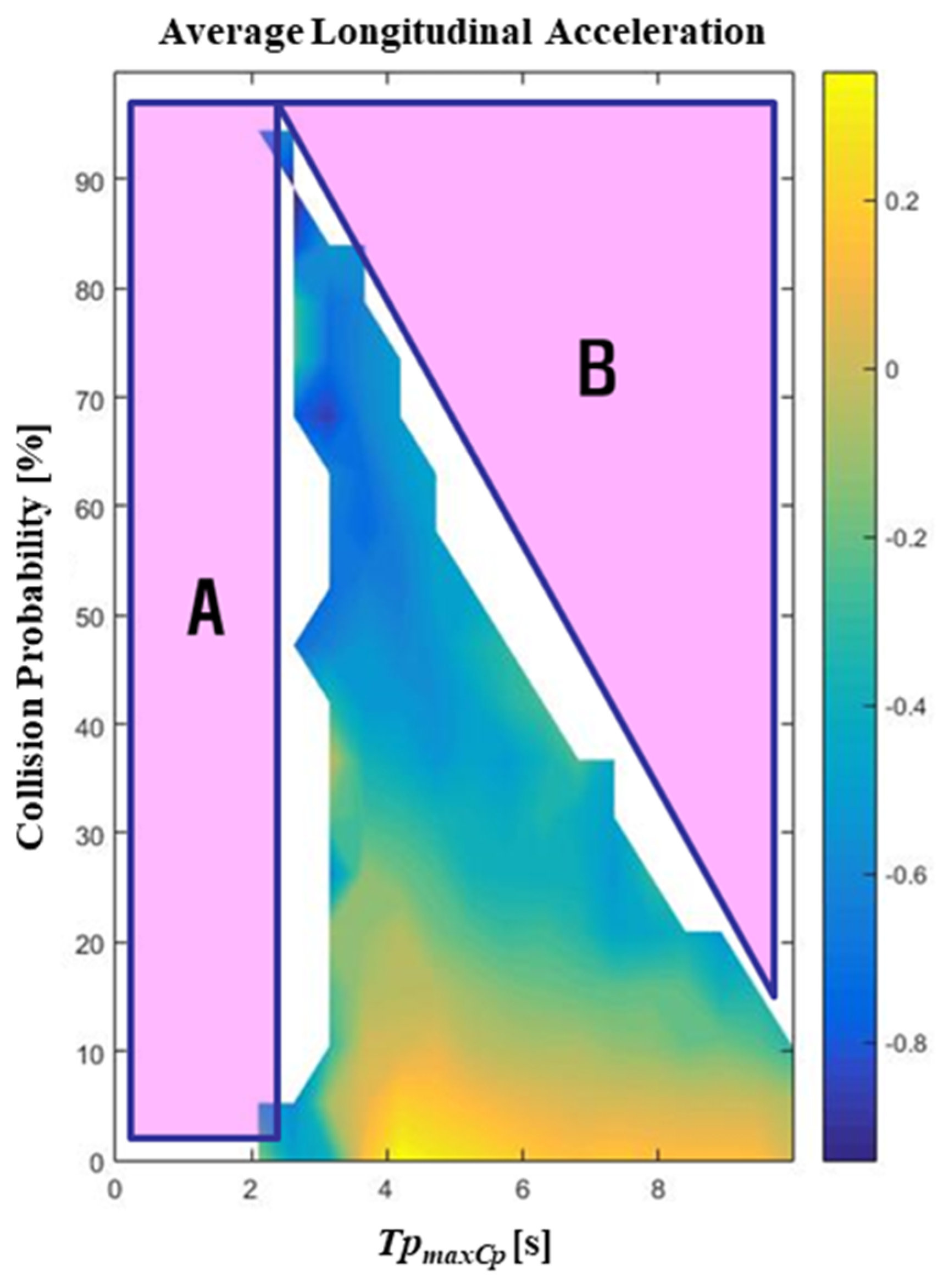
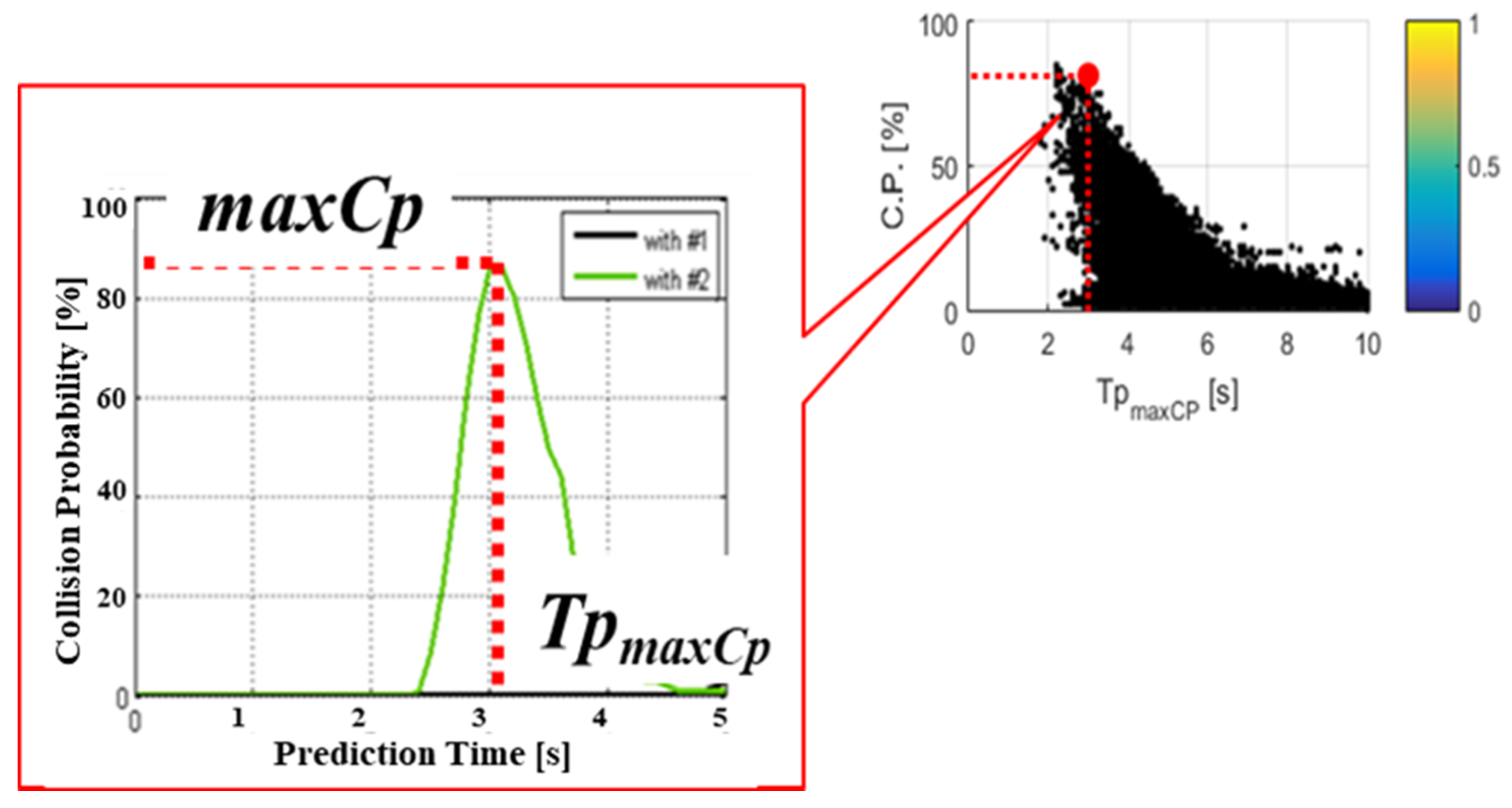

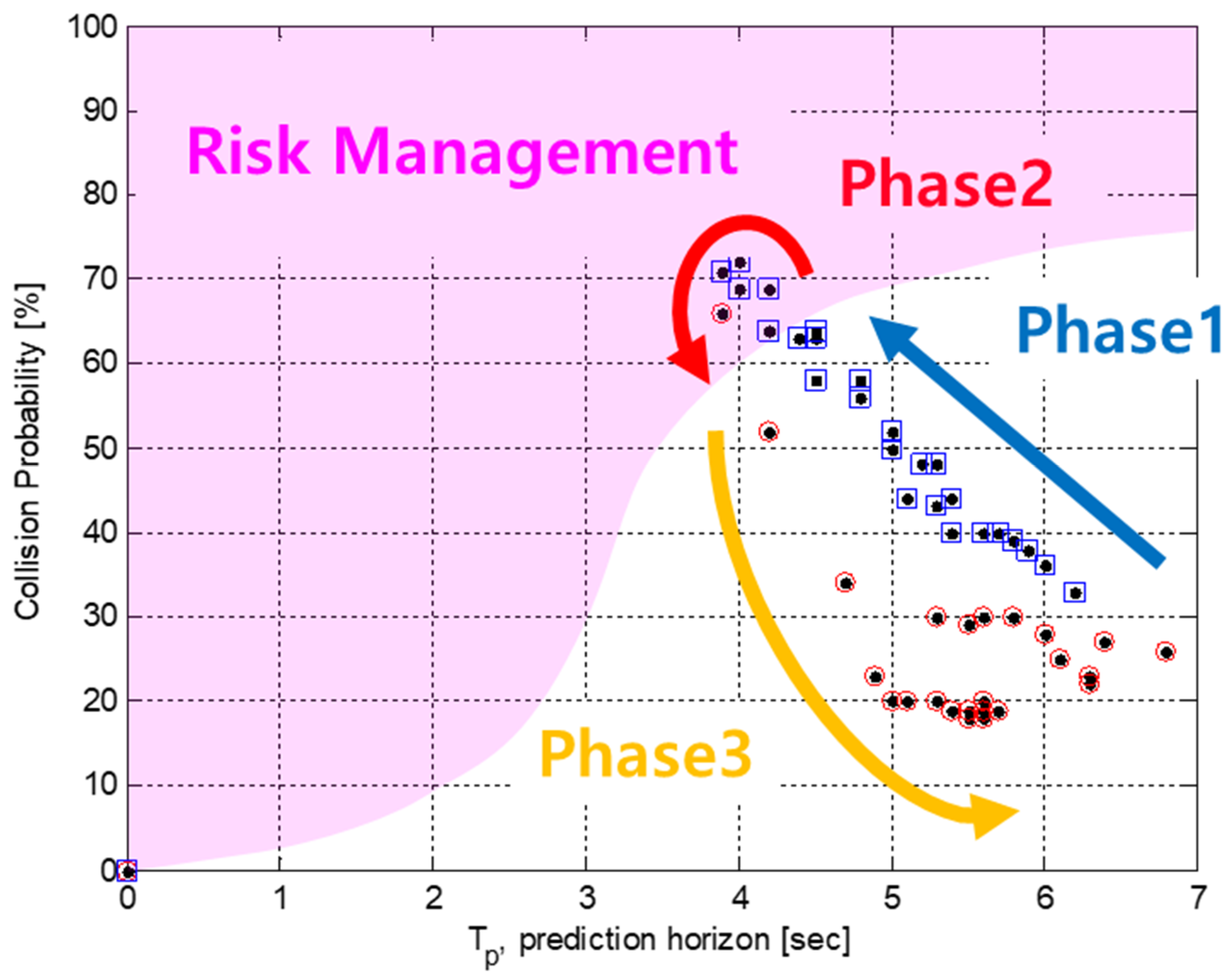
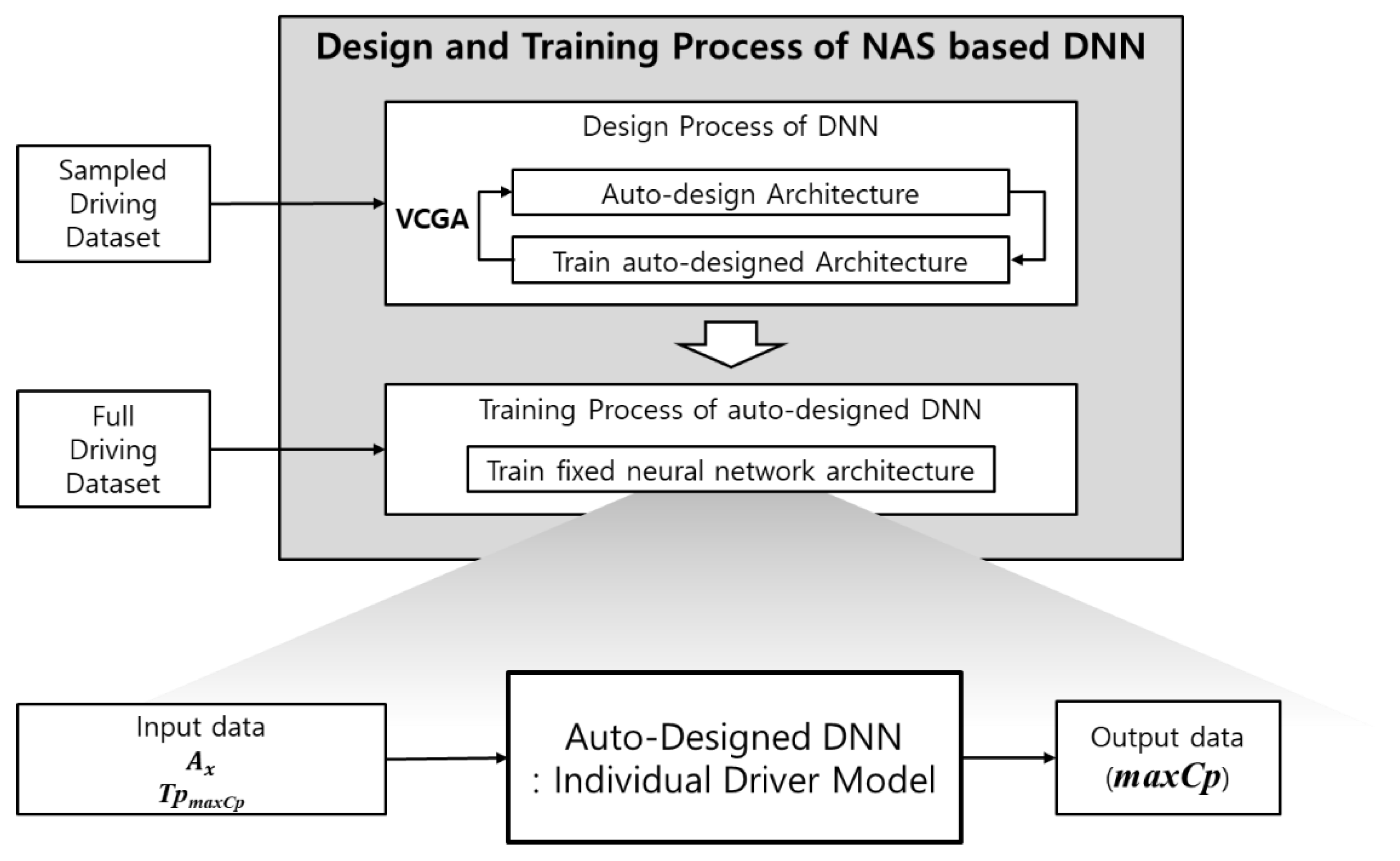
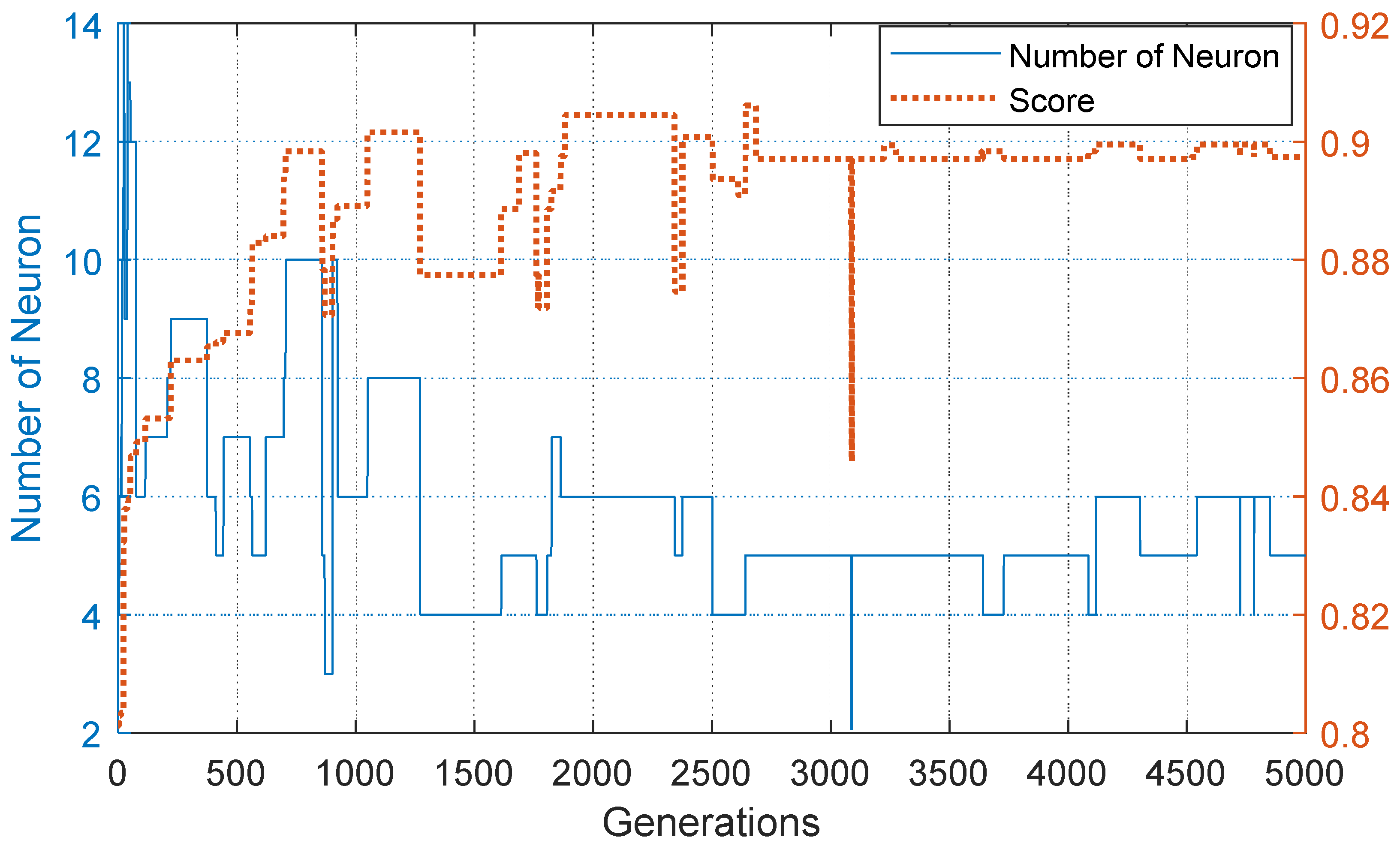
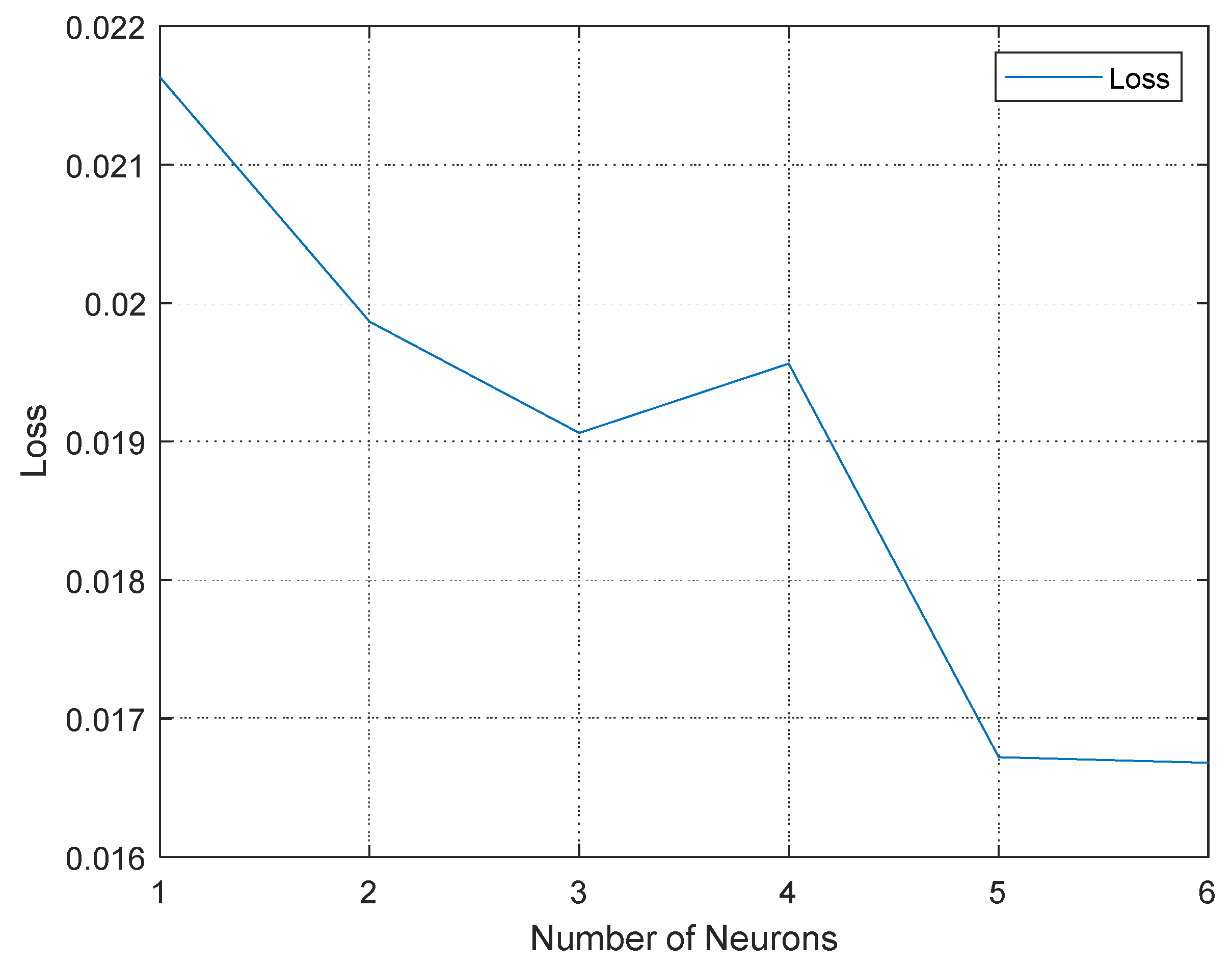
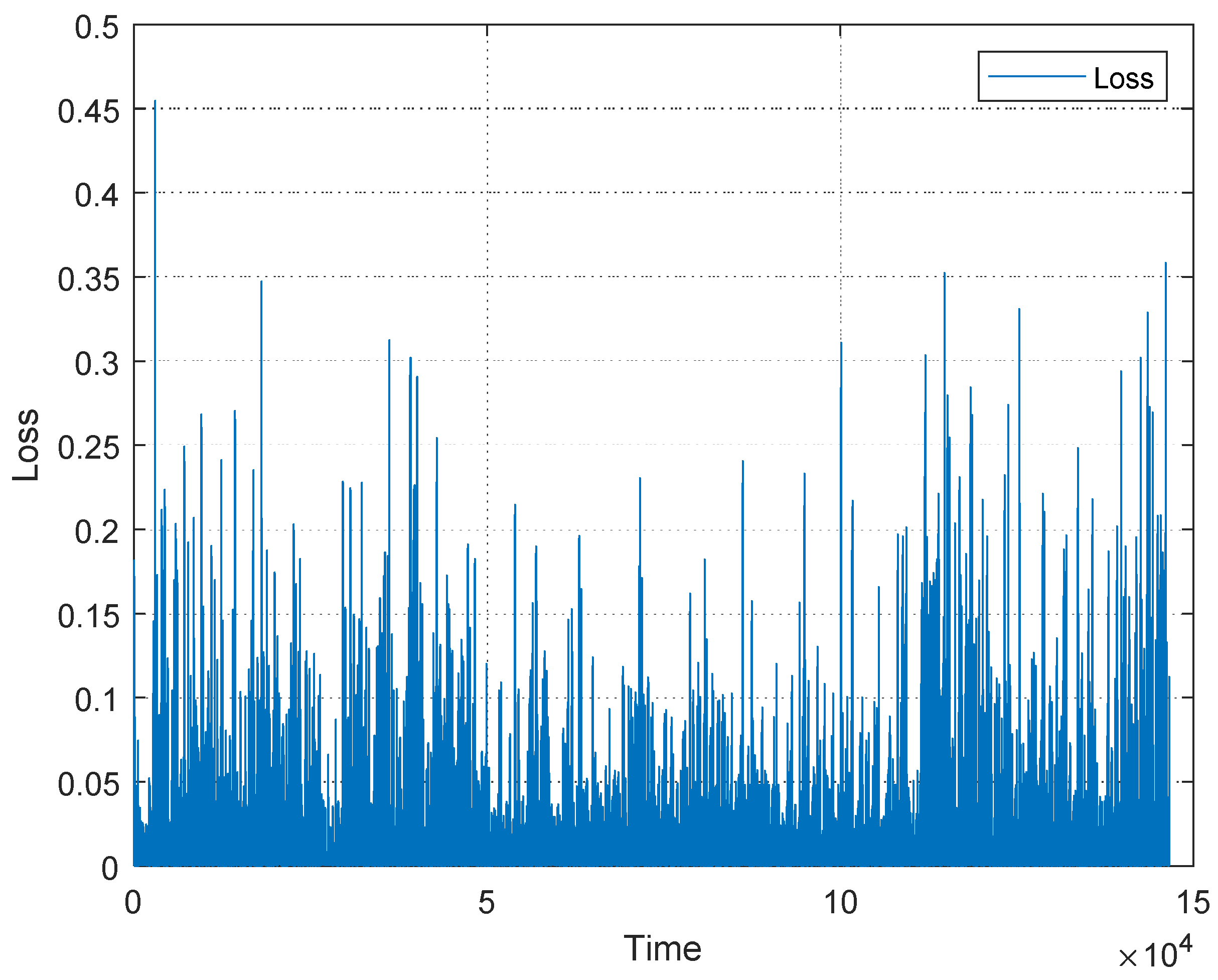
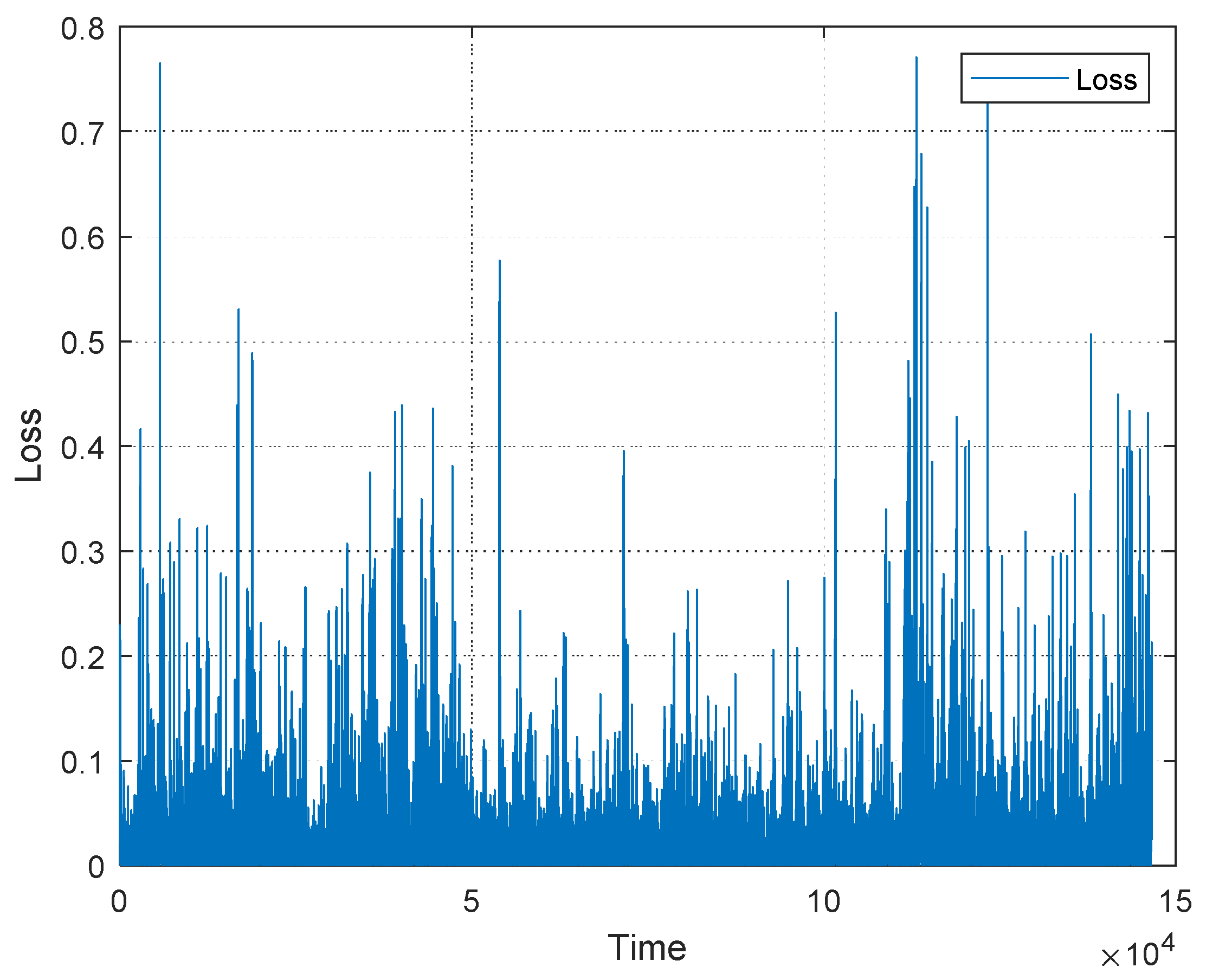
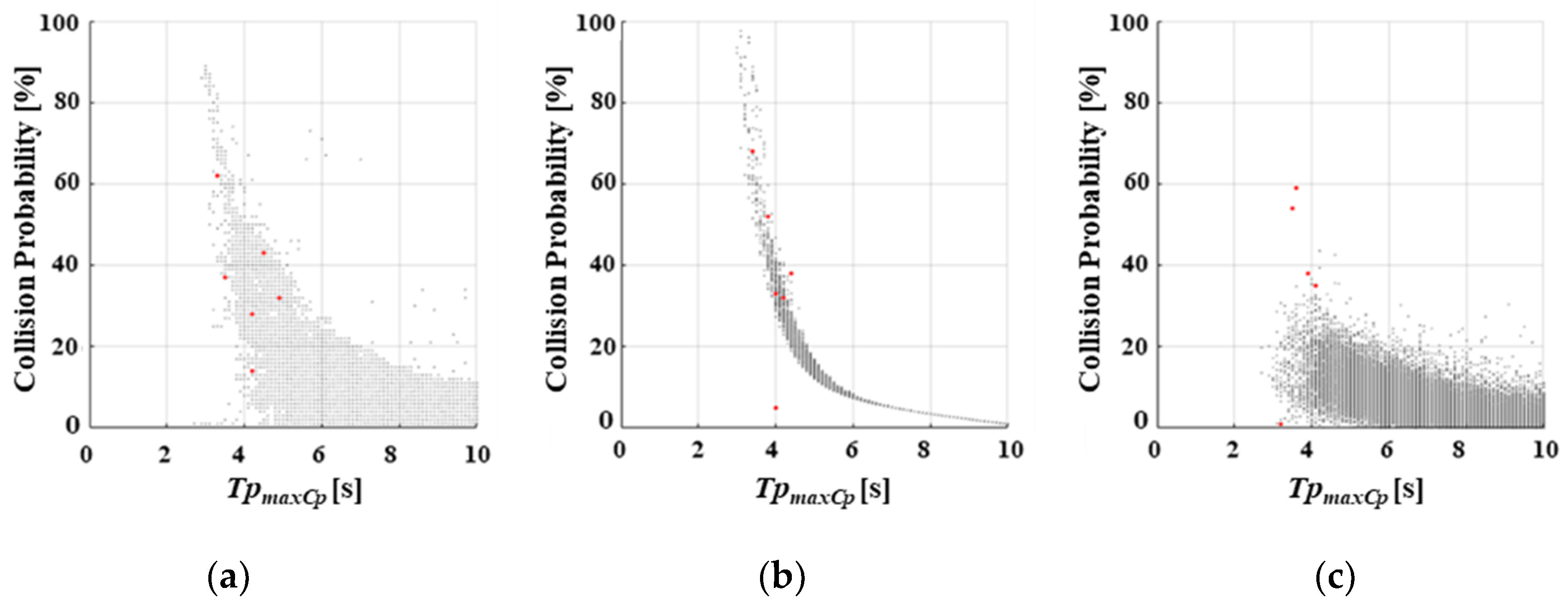
| Driving Phase | Risk Management |
|---|---|
| Phase 0 | Normal Driving |
| Phase 1 | Collision Risk Increase |
| Phase 2 | Safety Control |
| Phase 3 | Safety Spacing |
| Architecture | DNN with 1 Neuron | DNN with 2 Neurons | DNN with 3 Neurons | DNN with 4 Neurons | DNN with 5 Neurons | DNN with 6 Neurons | RNN with 5 Sequences |
|---|---|---|---|---|---|---|---|
| Loss | 0.021684 | 0.019931 | 0.019142 | 0.019627 | 0.016811 | 0.016753 | 0.02962 |
© 2019 by the authors. Licensee MDPI, Basel, Switzerland. This article is an open access article distributed under the terms and conditions of the Creative Commons Attribution (CC BY) license (http://creativecommons.org/licenses/by/4.0/).
Share and Cite
Shin, D.; Kim, H.-g.; Park, K.-m.; Yi, K. Development of Deep Learning Based Human-Centered Threat Assessment for Application to Automated Driving Vehicle. Appl. Sci. 2020, 10, 253. https://doi.org/10.3390/app10010253
Shin D, Kim H-g, Park K-m, Yi K. Development of Deep Learning Based Human-Centered Threat Assessment for Application to Automated Driving Vehicle. Applied Sciences. 2020; 10(1):253. https://doi.org/10.3390/app10010253
Chicago/Turabian StyleShin, Donghoon, Hyun-geun Kim, Kang-moon Park, and Kyongsu Yi. 2020. "Development of Deep Learning Based Human-Centered Threat Assessment for Application to Automated Driving Vehicle" Applied Sciences 10, no. 1: 253. https://doi.org/10.3390/app10010253
APA StyleShin, D., Kim, H.-g., Park, K.-m., & Yi, K. (2020). Development of Deep Learning Based Human-Centered Threat Assessment for Application to Automated Driving Vehicle. Applied Sciences, 10(1), 253. https://doi.org/10.3390/app10010253





